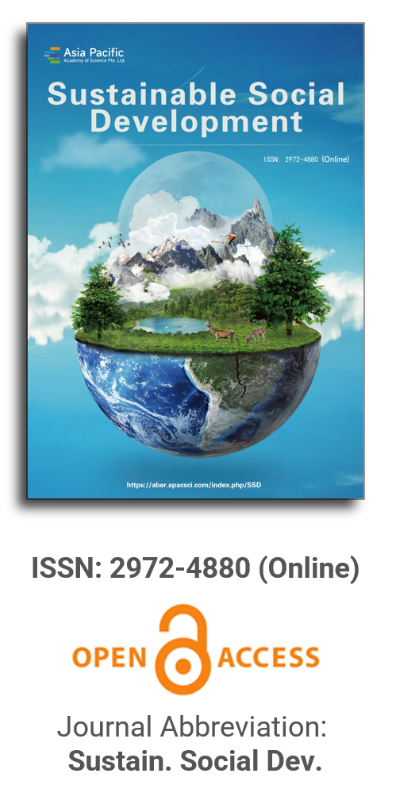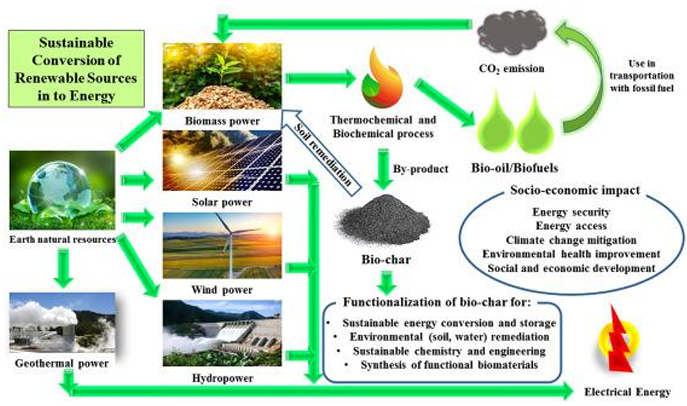
Asia Pacific Academy of Science Pte. Ltd. (APACSCI) specializes in international journal publishing. APACSCI adopts the open access publishing model and provides an important communication bridge for academic groups whose interest fields include engineering, technology, medicine, computer, mathematics, agriculture and forestry, and environment.

Migration of highly skilled workers: Modelling the relationships with business sustainability
Vol 1, Issue 2, 2023
Download PDF
Abstract
The research paper investigates the impact of international migration of highly skilled workers on business sustainability and models the relationships between them on this basis. The relationship between the migration of highly skilled workers and business sustainability was investigated using the example of 27 countries of the European Union in 2022, based on the use of the correlation analysis method by calculating the Pearson pairwise correlation coefficient. The results of the correlation analysis demonstrate that “brain drain” has a negative impact on the values of business sustainability indicators. Companies of all sizes, industries, and geographies are improving their sustainability management practices while being tolerant of workers from other countries. A significant positive impact of the arrival of highly skilled individuals from abroad for employment on the “business environment” indicator in the Global Innovation Index of the destination country has been proven. In order to detail the relationship between the migration of highly skilled workers and business sustainability, an economic and mathematical model of the form y4 = 26.114 − 2.039x1 + 0.080x3 − 0.090x5 + 0.113x6 was developed, which proves that the creation of conditions for attracting and retaining highly qualified migrants is of primary importance for the formation of a sustainable business culture in the country.
Keywords
References
- Burmann M, Perez MH, Hoffmann V, et al. Highly skilled labour migration in Europe. ifo DICE Report 2018; 16: 42–52.
- Global compact for safe, orderly and regular migration. Available online: https://www.ohchr.org/en/migration/global-compact-safe-orderly-and-regular-migration-gcm (accessed on 4 September 2023).
- Weinar A, Klekowski von Koppenfels A. Highly skilled migration: Concept and definitions. In: Highly Skilled Migration: Between Settlement and Mobility. Springer Cham; 2020. pp. 9–35.
- Orrenius PM, Zavodny M, Abraham AT. The effect of immigration on business dynamics and employment. Available online: https://docs.iza.org/dp13014.pdf (accessed on 4 September 2023).
- Shimada A. Does the host country experience the brain drain or the brain gain by accepting study migrants? Economy & Business Journal 2021; 15(1): 260–277.
- Li W, Lo L, Lu Y, et al. Intellectual migration: Considering China. Journal of Ethnic and Migration Studies 2021; 47(12): 2833–2853. doi: 10.1080/1369183X.2020.1739393
- Lulle A, Janta H, Emilsson H. Introduction to the special issue: European youth migration: Human capital outcomes, skills and competences. Journal of Ethnic and Migration Studies 2021; 47(8): 1725–1739. doi: 10.1080/1369183X.2019.1679407
- Iqbal K, Wang Y, Khurshaid K, et al. Current trend and determinants of intentions to migrate: Evidence from China. SAGE Open 2021; 11(1). doi: 10.1177/21582440211001371
- Oliinyk O, Bilan Y, Mishchuk H, et al. The impact of migration of highly skilled workers on the country’s competitiveness and economic growth. Montenegrin Journal of Economics 2021; 17(3): 7–19. doi: 10.14254/1800-5845/2021.17-3.1
- Abel GJ, Cohen JE. Bilateral international migration flow estimates for 200 countries. Scientific Data 2019; 6(1): 82. doi: 10.1038/s41597-019-0089-3
- Fragile States Index. Available online: https://fragilestatesindex.org/ (accessed on 4 September 2023).
- INSEAD. The Global Talent Competitiveness Index 2022: The Tectonics of Talent: Is the World Drifting Towards Increased Talent Inequalities? INSEAD; 2022.
- Vazzana CM, Rudi-Polloshka J. Appalachia has got talent, but why does it flow away? A study on the determinants of brain drain from rural USA. Economic Development Quarterly 2019; 33(3): 220–233. doi: 10.1177/0891242419844320
- Vega-Muñoz A, Gónzalez-Gómez-del-Miño P, Espinosa-Cristia JF. Recognizing new trends in brain drain studies in the framework of global sustainability. Sustainability 2021; 13(6): 3195. doi: 10.3390/su13063195
- Yunitasari D, Khotimah K, Fathorrazi M. The implication of brain gain on brain drain phenomenon in overcoming the problem of educated unemployment in Indonesia. Sosiohumaniora 2021; 23(1): 133–140. doi: 10.24198/sosiohumaniora.v23i1.26749
- Ette A, Witte N. Brain drain or brain circulation? Economic and non-economic factors driving the international migration of German citizens. In: Erlinghagen M, Ette A, Schneider NF, et al. (editors). The Global Lives of German Migrants: Consequences of International Migration Across the Life Course. Springer Cham; 2021. pp. 65–83
- Xue S, Zhang B, Zhao X. Brain drain: The impact of air pollution on firm performance. Journal of Environmental Economics and Management 2021; 110: 102546. doi: 10.1016/j.jeem.2021.102546
- Banerjee R, Verma A, Zhang T. Brain gain or brain waste? Horizontal, vertical, and full job-education mismatch and wage progression among skilled immigrant men in Canada. International Migration Review 2019; 53(3): 646–670. doi: 10.1177/0197918318774501
- Săniuţă A, Jianu MM. Brain gain-return migration stimulation public policies. An innovative approach using corporate managerial tools strategies. Romanian Journal of Society and Politics 2022; 16(1).
- Wang H, Miao L. China’s talent attraction policies in the present age. In: China’s Domestic and International Migration Development. Springer; 2019. pp. 169–184.
- Organization for Economic Co-operation and Development (OECD). Creating Responsive Adult Learning Opportunities in Japan (Getting Skills Right). Organization for Economic Co-operation and Development (OECD); 2021.
- Crocetti E, Albarello F, Prati F, Rubini M. Development of prejudice against immigrants and ethnic minorities in adolescence: A systematic review with meta-analysis of longitudinal studies. Developmental Review 2021; 60: 100959.
- Hoxhaj R, Zuccotti CV. The complex relationship between immigrants’ concentration, socioeconomic environment and attitudes towards immigrants in Europe. Ethnic and Racial Studies 2021; 44(2): 272–292. doi: 10.1080/01419870.2020.1730926
- EcoVadis. Business Sustainability Risk and Performance Index 5th Edition 2022. Available online: https://resources.ecovadis.com/sustainability-impact/business-sustainability-risk-performance-index-2021
- SolAbility. Business sustainability: World map. Available online: https://solability.com/solability/the-global-sustainable-competitiveness-index/economic-sustainability-index (accessed on 4 September 2023).
- WIPO. Global innovation index 2022. What is the future of innovation driven growth? Available online: https://www.wipo.int/edocs/pubdocs/en/wipo-pub-2000-2022-en-main-report-global-innovation-index-2022-15th-edition.pdf (accessed on 4 September 2023).
- Commisceo Global Consulting. The business culture complexity index. Available online: https://www.commisceo-global.com/resources/bcci (accessed on 4 September 2023).
- Edelmann D, Móri TF, Székely GJ. On relationships between the Pearson and the distance correlation coefficients. Statistics & Probability Letters 2021; 169: 108960. doi: 10.1016/j.spl.2020.108960
- Alsaqr A. Remarks on the use of Pearson’s and Spearman’s correlation coefficients in assessing relationships in ophthalmic data. African Vision and Eye Health 2021; 80(1). doi: 10.4102/aveh.v80i1.612
- Gryshova I, Kofman B, Petrenko O. Migration cultures and their outcomes for national security. Journal of Security & Sustainability 2019; 8(3): 521–530. doi: 10.9770/jssi.2019.8.3(18)
- Oliinyk О, Mishchuk H, Bilan Y, Skare M. Integrated assessment of the attractiveness of the EU for intellectual immigrants: A taxonomy-based approach. Technological Forecasting and Social Change 2022; 182: 121805. doi: 10.1016/j.techfore.2022.121805
- SolAbility. The Sustainable Competitiveness Report, 11th ed. SolAbility; 2022.
- Edo A. The impact of immigration on the labor market. Journal of Economic Surveys 2019; 33(3): 922–948. doi: 10.1111/joes.12300
- Piyapromdee S. The impact of immigration on wages, internal migration, and welfare. The Review of Economic Studies 2021; 88(1): 406–453. doi: 10.1093/restud/rdaa029
- Aragona M, Barbato A, Cavani A, et al. Negative impacts of COVID-19 lockdown on mental health service access and follow-up adherence for immigrants and individuals in socio-economic difficulties. Public Health 2020; 186: 52–56. doi: 10.1016/j.puhe.2020.06.055
Supporting Agencies
Copyright (c) 2023 Оlena Oliinyk
License URL: https://creativecommons.org/licenses/by/4.0/

This site is licensed under a Creative Commons Attribution 4.0 International License (CC BY 4.0).

Prof. Kittisak Jermsittiparsert
University of City Island, Cyprus






It is with deep regret that we announce the cancellation of the Forum on Sustainable Social Development & Computing and Artificial Intelligence, originally scheduled for June 15, 2025.

